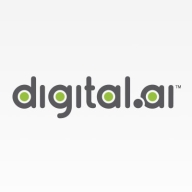

OpenText ALM / Quality Center and Digital.ai Agility are competing in the application lifecycle management and agile project management domains. Digital.ai Agility seems to have the upper hand due to its adaptive features and ROI satisfaction based on data comparisons.
Features: OpenText ALM / Quality Center offers comprehensive requirement management, test planning, and quality assurance integrations. Digital.ai Agility features advanced agile management tools, seamless collaboration features, and superior DevOps integration.
Room for Improvement: OpenText ALM could improve in reducing deployment time by enhancing cloud compatibility and streamlining infrastructure requirements. It can also enhance user interface adaptability and expand agile management capabilities. Digital.ai Agility could refine its traditional ALM features, enhance documentation, and expand its support for larger enterprise environments.
Ease of Deployment and Customer Service: OpenText ALM / Quality Center typically has longer deployment times due to specific infrastructural settings needed, with a more structured support approach. Digital.ai Agility benefits from cloud-based deployment for a faster setup and provides agile-focused, responsive customer service.
Pricing and ROI: OpenText ALM / Quality Center often involves a higher setup cost but offers extensive ALM solutions justifying the expense for traditional tool-seekers. Digital.ai Agility is noted for better ROI through flexible pricing and lower initial costs, aligning well with agile workflows, making it cost-effective for iterative project needs.


Enterprise business agility rests on agile planning that scales and has the flexibility needed to meet the needs of customers and the market. Digital.ai Agility enables organizations to scale up agile from the team level across the product portfolio, improve collaboration and efficiency, and deliver software that provides more value.
We monitor all Application Lifecycle Management (ALM) Suites reviews to prevent fraudulent reviews and keep review quality high. We do not post reviews by company employees or direct competitors. We validate each review for authenticity via cross-reference with LinkedIn, and personal follow-up with the reviewer when necessary.